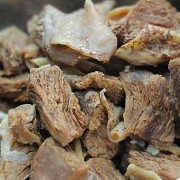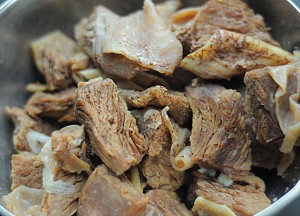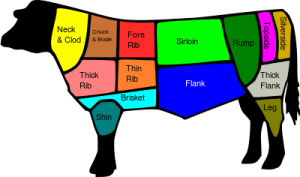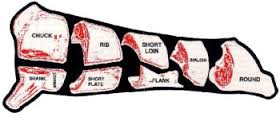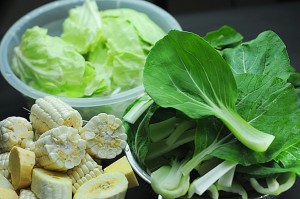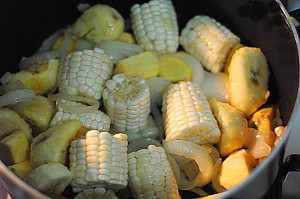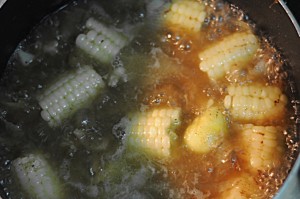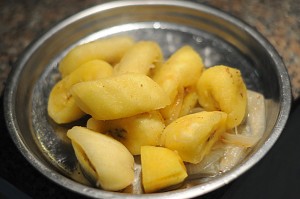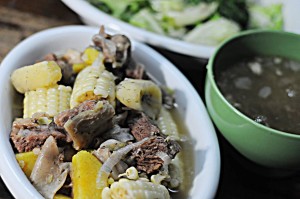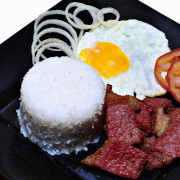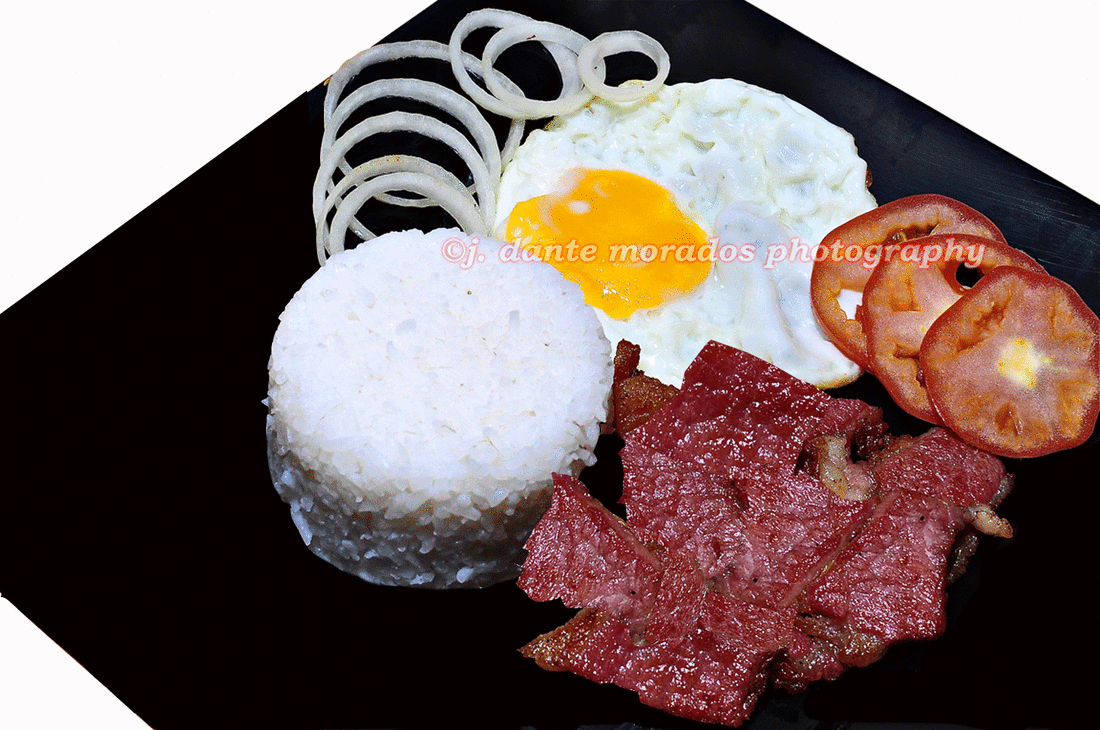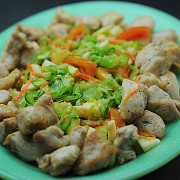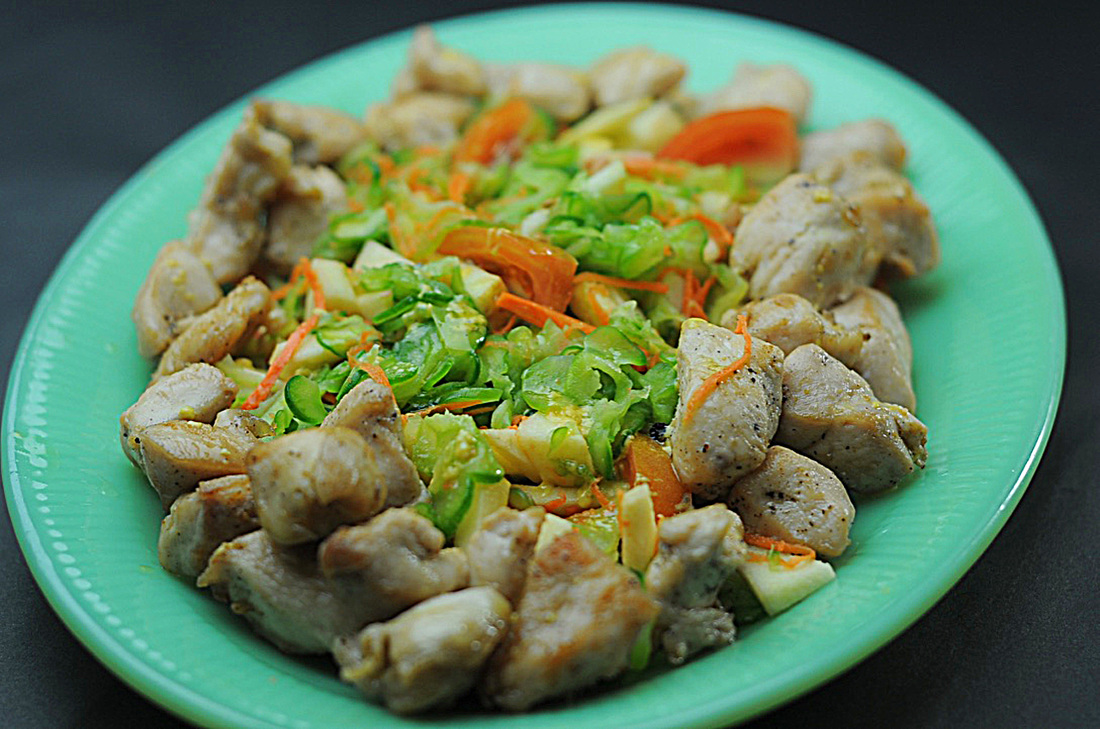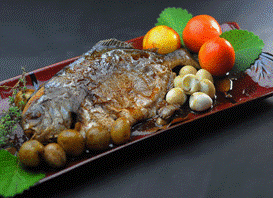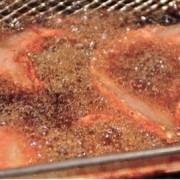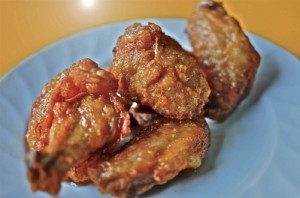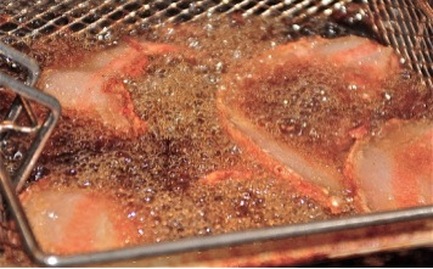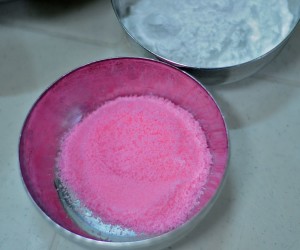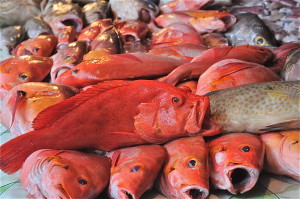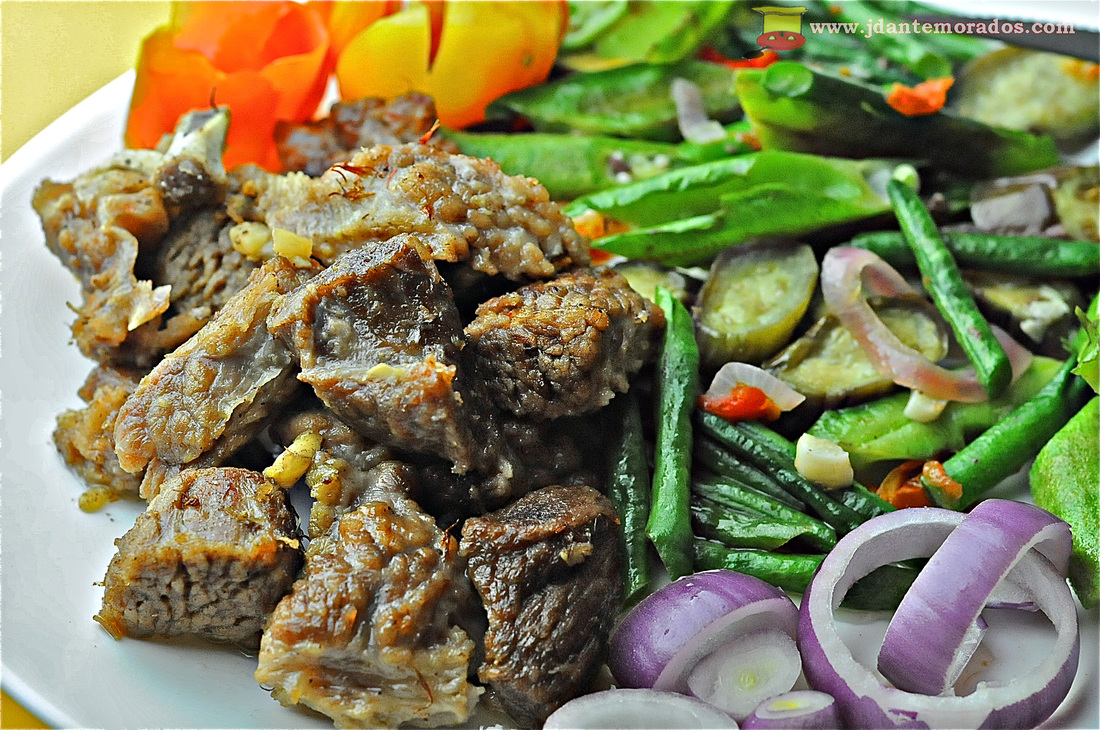3-Way “Nilagang Baka”
“3-WAY NILAGANG BAKA”
(Veggies Laden Boiled Beef Flank Served 3 Ways)
Almost a photocopy of my October 4, 2014 post in the old blog format,
this “Nilagang Baka” is different though both utilized beef flank.
Allow me to re-state prologue of the previous post.
Flank and the immediately adjacent short plate are widely used
cuts of beef for commercial concerns.
Flesh (lean), which dominates the cut, is secondarily layered by cartilage
then thin soft fat before the skin.
Together with brisket, it is also usually processed into real cattle corned beef,
real burger patties and real franks-sausages.
I claimed real for majority of mentioned items processed in the country
are made from buffalo beef from India (similar to our carabao meat)
…which is why-it MUST be termed as CARA-BEEF.
Check this post to enlighten us on the kinds of beef.
Further, most of the “pares” & “beef mami” mistakenly known by many
as that coming from cattle beef flank, short plate or brisket
are actually derived from CARABAO
called “LOMO SA LOOB” (internal loin)
No worry. Nothing’s wrong except:
mis-conception, mis-representation by some merchants
and the darker brown color of lean than those of real cattle beef.
Fact is, I love them for they have higher protein content and a lot cheaper.
Ok now, the Camto we will be dealing with is from flank of cattle beef.
Rainy season here and this type of dish goes well with steaming rice,
“patis” (fish sauce) with or without crushed “labuyo” (bird’s eye chillies)
and, for me, a soda by the side.
(thanks wikihow, Wikipedia & Google)
Prep time: 15 minutes
Cook time: 1 hour
Total time: 1 hour 15 minutes
Serves: 8
Cooking media: big frying pan, deep casserole
Game plan: this is a different cooking approach. Be ready to rock.
INGREDIENTS:
1 kilo camto or beef flank cut 1.5” to 2” thick and 2”-3” long
1 small white onion-sliced
3 grams salt
2 grams ground black pepper
1 small cabbage sliced
3 pieces peeled Japanese corn cut each into 3
2 bunches of “bok choy” (type of Chinese cabbage) root ends removed
3 pieces “saging na saba” (cardava banana or saba banana) peeled each cut to 3
2 pieces “camote” (sweet potato) each quartered
50 ml. palm or soya oil
10 ml. “patis”
OPTIONAL MSG…2 grams
Water
PROCEDURES:
1. Via casserole, in enough tap water to cover sliced meat, bring beef to boil until tender. When done scoop out tender beef set aside as well as the broth which will be utilized later.
- Heat oil in pan. Add in onion. Sauté until translucent.
- Add in corn, banana, camote , salt, pepper and the OPTIONAL MSG. Toss and tumble well. Continue on until a bit brownish.
4. Transfer all into casserole with broth. Boil.
5. When banana and camote are about 80% done, scoop them out and set aside. Continue boiling corn until desired tenderness is attained.
6. When corn is done, add in boiled beef, banana and camote. Flavor up with patis and continue on for another 3 minutes.
7. When done, remove casserole from fire. Add in bok choy and cabbage. COVER casserole for 2 minutes-cooking both veggies in a crunchy-nutritious state.
8. Separate veggies and beef from soup. Serve 3 ways.
DISCLAIMER: Above are test kitchen and household-produced dishes. All ingredients utilized are of food grade quality passing international and domestic sanitary standards. While we find the results highly acceptable, no guarantee nor explicit assurance is hereby issued when recipe is performed by readers. For one, although of similar breed, spices, herbs and other ingredients vary from country to country/region to region that possibility of affecting end taste, aroma & bite-feel is great. Further thereto, mentioned sensory evaluation (aroma, taste, mouth-feel) is subjective.


